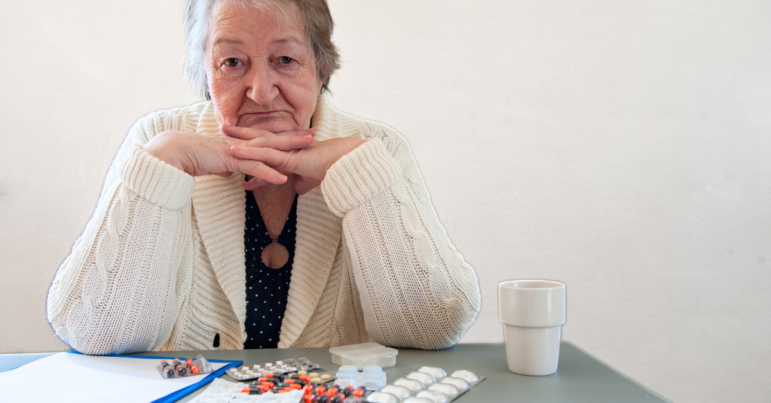Seniors today often juggle a confusing mix of pills meant to ease pain, steady hearts, or lift moods. Inside senior living communities, weekly pill boxes resemble tiny rainbow calendars, each color a promise of better health.
Yet, as prescriptions stack up, helpful treatment can tip into harm. Doctors may call it polypharmacy, but labels matter less than reality. Too many drugs can turn a well-meant care plan into a daily gamble. Over time, risks quietly multiply for older adults.
When Prescriptions Pile Up
A new prescription is sometimes added before anyone asks whether an old one still works. A pill that once handled heartburn may linger long after the symptoms vanish simply because nobody thought to cross it off the list.
Add a specialist here and an urgent-care visit there, and the lineup can swell to ten or even fifteen daily doses. The longer the list, the greater the chance of swallowing a pill at the wrong time, skipping one by accident, or doubling up without noticing.
Hidden Dangers of Drug Interactions
Every medication is tested on its own, but real life looks more like a packed dinner table than a tidy lab bench. Blood thinners can clash with common pain relievers and raise the risk of bleeding. Some sleep aids slow thinking the next morning, making falls likelier when combined with pressure-lowering pills.
Even basic vitamins can speed up or slow down how other drugs break down inside the body. Because these reactions brew quietly, the first hint may be a new bruise, sudden dizziness, or an unexpected trip to the emergency room.
Warning Signs Families Should Watch For
Changes in mood, appetite, or energy often speak louder than pill labels. If Mom suddenly dozes through breakfast or Dad starts skipping cards because he feels off balance, medication overload could be the hidden reason. Look for fresh rashes, stomach upset, or trouble remembering simple tasks.
A spike in blood sugar or a dip in blood pressure may surface between doctor visits. Any new or worsening symptom is worth framing with one question: “Could the medicine cabinet be the culprit?”
Simple Steps to Lighten the Load
Begin with a brown-bag review: place all prescriptions, over-the-counter drugs, and supplements in one bag and bring them to the next appointment. Ask two simple questions about each item: “Do I still need it?” and “Can the dose be lower?” Keep a single, updated list and share it with every provider.
Use clear pill organizers or phone alarms to prevent missed or double doses. Most importantly, encourage honest conversation—doctors can trim the list only if they know what is being taken.
Conclusion
Medicine should help seniors move, laugh, and live. By staying alert to the signs of overload and keeping the prescription list lean and clear, families and care teams can ensure that pills remain partners in health, not hidden hazards. A little vigilance today protects independence tomorrow.



Leave a Reply